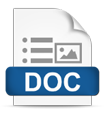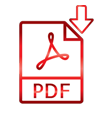PERAN VALUASI DAN PENYAJIAN HUMAN RESOURCES ACCOUNTING DI INSTITUSI PENDIDIKAN
Abstract
Full Text:
PDFReferences
Abeysekera, Indra. 2014. Why do Firms Disclose and Not Disclose Structural Intangibles?. Journal of Advances in Accounting incorporating Advances in International Accounting.
Anderson, Claire. 2010. Presenting and Evaluating Qualitative Research. American Journal of Pharmaceutical Education.
American Accounting Association. A Statement of Basic Accounting Theory, Evaston, IL: AAA, revised ed., 1970. page 35.
Appelbaum., Steven, H., and Hood J. 1993. Accounting for the Firm’s Human Resources. Managerial Auditing Journal Vol. 8 No. 2.
Arsalan, S. 2012. Human Capital dan Kendala Penerapannya dalam Laporan Keuangan. Seminar Nasional Akuntansi dan Bisnis.
Avazzadehfath, F., and Raiashekar. 2011. Decision Making Based on Human Resource Accounting Information and Its Evaluation Method. Asian Journal of Finance & Accounting, Vol.3, No 1: E14.
Bahar, M.N. 2012. Human Capital Accounting. International Journal of Marketing and Technology. Volume 2, Issue 6.
Bastian, Indra. 2006. Akuntansi Pendidikan. Jakarta: Erlangga.
Beattie, V., and Smith, J.S. 2010. Human Capital, Value Creation and Disclosure. Journal of Human Resource Costing & Accounting. Vol. 14 No.4, 2010.
Belkoui, Ahmed, 2000, Teori Akuntansi, 4th edition, Jakarta: Penerbit Salemba Empat.
Berkowitz., Steven J. 2001. Measuring and Reporting Human Capital. The Journal of Government Financial Management. Vol.5; No.3.
Bontis. et al. 1999. The Knowledge Toolbox: A Review of the Tools Available to Measure and Manage Intangible Resources. European Management Journal Vol. 17, No.4.
Brannstrom, D., and Marco, G. 2009. Accounting for Intellectual Capital: a Comparative Analysis. The journal of information and knowledge management systems. Vol.2, No.1.
Bras, F. A., and Lucia, R.L. 2007. Accounting for firms’Training Programs: an Exploratory Study. Jornal of Human Resource Costing & Accounting.
Brummet, R.L. 1970. Accounting for Human Resources. Jornal of Accountancy.
Bullen, M.L., and Eyler, K.A. Human Resource Accounting and International Developments: Implication for Measurement of Human Capital. Journal of international and cultural studies.
Carnevale, F., et al., 2008. Using Participant Observation in Pediactric Health Care Settings: Ethical Challenges and Solutions. Journal of Child Health Care: Sage Publication.
Cendika, F.B., dan T. Sawarjuwono. 2014. Metode Valuasi Human Capital dalam Konsep Human Resource Accounting (HRA) dan Pengungkapannya. SNA 17 Mataram.
Chariri, Anis. 2009. Landasan Filsafat dan Metode Penelitian Kualitatif. Jurnal Fakultas Ekonomi Universitas Semarang.
Chaudhry, N.I., and Roomi, M.A. 2010. Accounting for The Development of Human Capital in Manufacturing Organization : A Study of The Pakistani Textile Sector. Journal of Human Resorce Costing & Accounting Vol. 14, No. 3.
Chen, H.M., and Min, K.J. 2004. The Role of Human Capital Cost in Accounting. Journal of Intellectual Capital Vol. 5 No.1.
Cherian, J., and Farouq, S. 2013. A review of Human Resource Accounting and Organizational Performance. International Journal of Economics and Finance, Vol.5, No.8.
Cornwall, Andrea., and R. Jewkes. 1995. What Is Participatory Research?. Elsevier Science, Vol.41, No.12.
Clacher, Iain. 2010. National Accounting for Intangible Assets in The Knowledge Economy. Journal of Financal Regulation and Complianve, Vol.18, No.2.
Creswell, J.W. 2014. Research Design: Qualitative, Quantitative, & Mixed Methods Approaches. Fourth Edition. New Delhi: Sage Publications Ltd.
Dean, P.C, McKenna, K.M, and Krishnan, V. 2012. Accounting for Human Capital: Is the Balance Sheet Missing Something?. International Journal of Bussines and Social Science, Vol.3, No. 12.
Devi, A.P. 2004. Akuntansi untuk Pemain Sepak Bola. Jurnal Akuntansi dan Keuangan Indonesia, Vol.1.
Discatillo, O. L., Belincton, M. 2014. The Challenges of Participant Observations of Culture Encounters Within an Ethnographic Study. Jornal of Social and Behavioral Sciences.
Draper, A. K. 2004. The Principles and Application of Qualitative Research. Workshop on “Developing Qualitative Research Method Skills: Analysing and Applying Your Resultsâ€.
Flamholtz, E.G. 1974. “Human Resource Accounting: A Review Of Theory And Researchâ€. Journal of Management Studies, Volume 11, Issue 1, pages 44–61, February 1974
____________. 1986. Human Resources Accounting: Measuring Positional Replacement Costs. Jornal of Human Resource Management, Vol.12, No.1.
____________. 1999. Human Resource Accounting: Advances in Concepts, Methods, and Applications. USA: Kluwer Academic Publishers.
Flamhotz, E.G., Bulen, E.M., and Hua, W. 2002. Human Resource Accounting: A Historical Perspective and Future Implications. Journal of Management Decision, Vol.40, No.10.
Freeman, M., and Hall, J. N. 2012. The Compexity of Practice: Participant Observation and Values Engagement In A Responsive Evaluation of A Professional Development School Partnership. American Journal of Evaluation.
Gamerschlag, R., and Moeller, K. 2011. The Positive Effects of Human Capital Reporting. Corporate Reputation Review, Vol14, No.2.
Gogan, Maria L. 2014. An Innovative Model for Measuring Intellectual Capital. Social and Behavioral Sciences.
Greer, Charles R. 2001. Strategic Human Resources Manageme., New Jersey: Prentice Hall.
Gupta, D.K. 1994. The Jaggi-Lau Model of Human Resource Accounting Revisited. ASCI Journal of Management, Vol. 23.
Gupta, and Mahesh, V. Human Resources Accounting in Educational Institutions. National Monthly Refereed Journal of Research in Arts & Education, Vol. 1, Issue 12.
Hasan. 2009. Action Research: Desain Penelitian Integratif Untuk Mengatasi Permasalahan Masyarakat. Akses: Jurnal Ekonomi dan Bisnis, Vol.4, No.8.
Harahap, S. S. 2007. Teori Akuntansi. Jakarta: Raja Grafindo Persada.
Ikatan Akuntan Indonesia. 2007. Standar Akuntansi Keuangan. Jakarta: Salemba Empat. Jaggi, Bikki. 1976. Human Resources Are Assets. Artikel Dipublikasikan. Management Accounting. February 1976, Vol. 57 No. 8: Complete Page 41.
Jaarat, K. J. 2013. Human Resources Accounting Between Recognition and Measurement: An Empirical Study. Jornal of Business Studies Quaterly, Vol.5, No.2.
Kawulich, B. B. 2005. Participant Observation as a Data Collection Method. Forum: Qualitative Social Research Vol. 6, No.2.
Lichterman, P. 1998. What Do Movements Mean? The Value of Participant-Observation. Journal of Qualitative Sociology, Vol. 21, No.4.
Lisvery, S., dan Ginting, I.Y. 2004. Aktiva Tak Berwujud. Jurnal Akuntansi dan Keuangan Indonesia, Vol.1.
Mahmoodi, P., Balbael, F., and Mohamade, J. 2013. Human Resource Accounting: From Theory to Practice. European Online Journal of Natural and Social Sciences, Vol.2, No.3 (s).
Micah, L.C., C.O. Ofurum., J.U. Ihendinihu. 2012 Firm Financial Performance and Human Resource Accounting Disclosure in Nigeria. International Journal and Management, Vol.7, No.14.
Munivenkatappa., S.R. Jagadessh., and K.V. Bharathi. 2013. Human Resources Accounting System In IT and Manufacturing Sector – A Study. International Journal of Marketing and Technology, Vol.3, Issue 12.
Nazir, Moh. 1983. Metode Penelitian. Jakarta Timur: Ghalia Indonesia.
Oeye, C., Bjelland, K., Skorpen., A. 2007. Doing Participant Observation in a Psychiatric Hospital- Research Ethics Resumed. Journal of Social Science and Medicine.
Pablos, P.O. 2002. Evidence of Intellectual Capital Masurement from Asia, Europe, and The Middle East. Journal of Intellectual Capital, Vol.3, No.3.
Rispantyo. 2009. Akuntansi SumberDaya Manusia: Antara Hidup dan Mati. Jurnal Akuntansi dan Sistem Teknologi Informasi, Vol.7, No.1.
Roslender, R., and Stevenson, J. 2009. Accounting for People: A Real Step Forward or More A Case Of Wishing And Hoping?.Cricital Perspectives on Accounting.
Roslender, R., Abigail M., and J. Stevenson. 2014. Damned If You Do, Damned If You Don’t: Conflicting Perspectives On The Virtues Of Accounting For People. Critical Perspective on Accounting.
Rowbottom, N. 2002. The Application Of Intangible Asset Accounting And Discretionary Policy Choices In The UK Football Industry. British Accounting Review.
Sarwoko, Iman., dan Senastri, Kandi. 2006. Keterkaitan Strategi Manajemen Sumber Daya Manusia Dengan Akuntansi Sumber Daya Manusia, Jurnal Akuntansi Keuangan, FE UNPAD.
Sasirekha, A. 2009. Innovative Model for Assessing Human Assets. National Conference on Design, Manufacture and Management for next Generation.
Sawarjuwono, T., dan A.P. Kadir. 2003. Intellectual Capital: Perlakuan, Pengukuran, dan Pelaporan (Sebuah Library Research). Jurnal Ekonomi Akuntansi Fakultas Ekonomi Universitas Kristen Petra.
Shareef, F., and H. Davey. 2005. Accounting for Intellectual Capital. The Journal of Applied Accounting Research
Silverman, David. 2001. Interpreting Qualitative Data: Methods for Analysing Talk, Text and Interaction. Edisi Ketiga. New Delhi: Sage Publications Ltd.
Sofian, S., et al. 2011. Effect of Recognition of Intellectual Capital on Relevance of Accounting. Interdiscpilinary Journal Of Contemporary Research In Business, Vo.3, No.2.
Somantri, G. R. 2005. Memahami Metode Kualitatif. Jurnal Sosial Humaniora, Vol. 9. No. 2.
Stanko, B.B., T.L. Zeller., and M.F.Melena. 2014. Human Asset Accounting And Measurement: Moving Forward. Journal of Business & Economic Reseach, Second Quarter.
Sutanti, Yeti. 2010. Analisis Pengaruh pada Human Capital. Jurnal Ekonomi Universitas Pasundan.
Suwarto. 2006. Akuntansi Sumber Daya Manusia Sebagai Alternatif dalam Penyusunan Laporan Keuangan. Jurnal Akuntansi dan Sistem Teknologi Informasi, Vol.5, No.1.
Todea, N., and D.C. Mihaltan. 2013. Improving Human Resources Reporting In Non For Profit Organizations. Annales Universitatis Apulensis Series Oeconomica, Vol.15, No.2.
Tsay, J.J. 1986. Human Resource Accounting: A Need for Relevance. Journal of Management Accounting.
Wahyuni, Sari. 2012. Qualitative Research Method. Jakarta: Salemba Empat.
http://media.ifrs.org/
http://www.sciencedirect.com/
http://www.proquest.co.uk/en-UK/
Refbacks
- There are currently no refbacks.
Â

Liability by https://journal.uwks.ac.id/index.php/liability is licensed under a Creative Commons Attribution-ShareAlike 4.0 International License.
Â
Â
Â
Â
Â
Â
Â
Â
Â
Â
LIABILITY
Department of Accountig, Faculty of Economics and Business
Universitas Wijaya Kusuma Surabaya
Dukuh Kupang XXV No. 54 Surabaya, Indonesia 60225
Phone: +62315613231
email: liability@uwks.ac.id eISSNÂ 2686-4320



